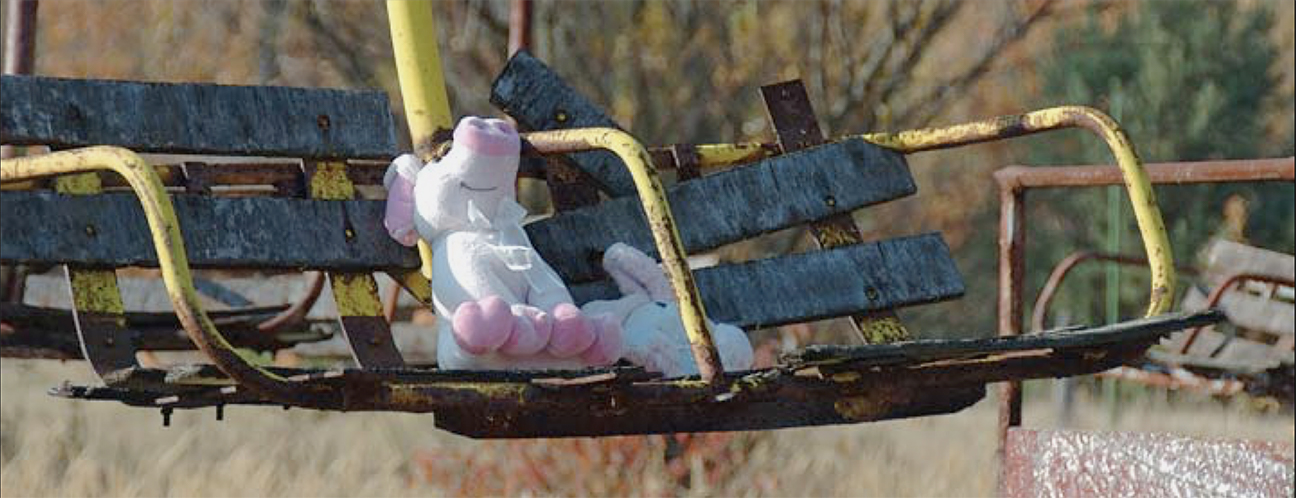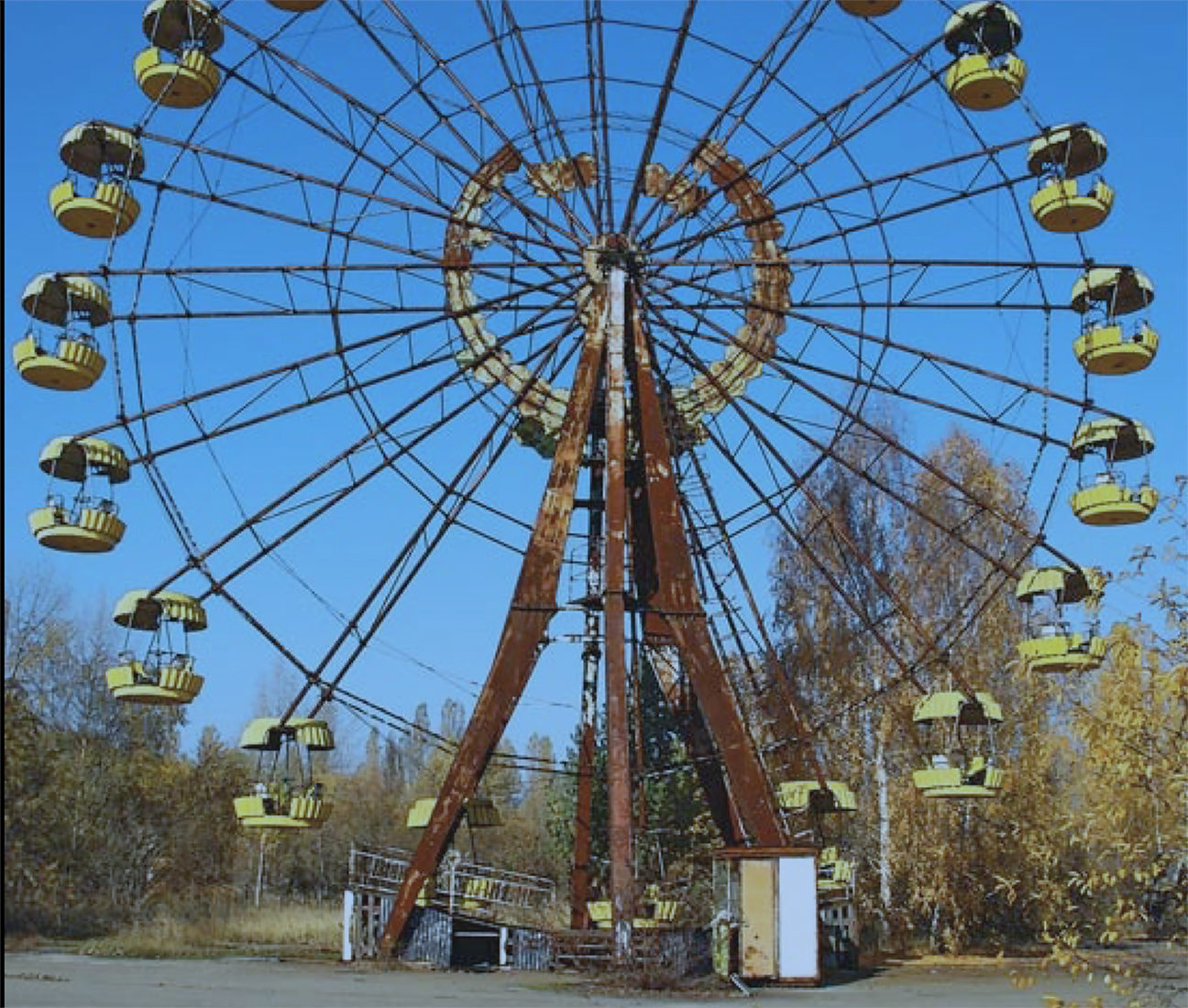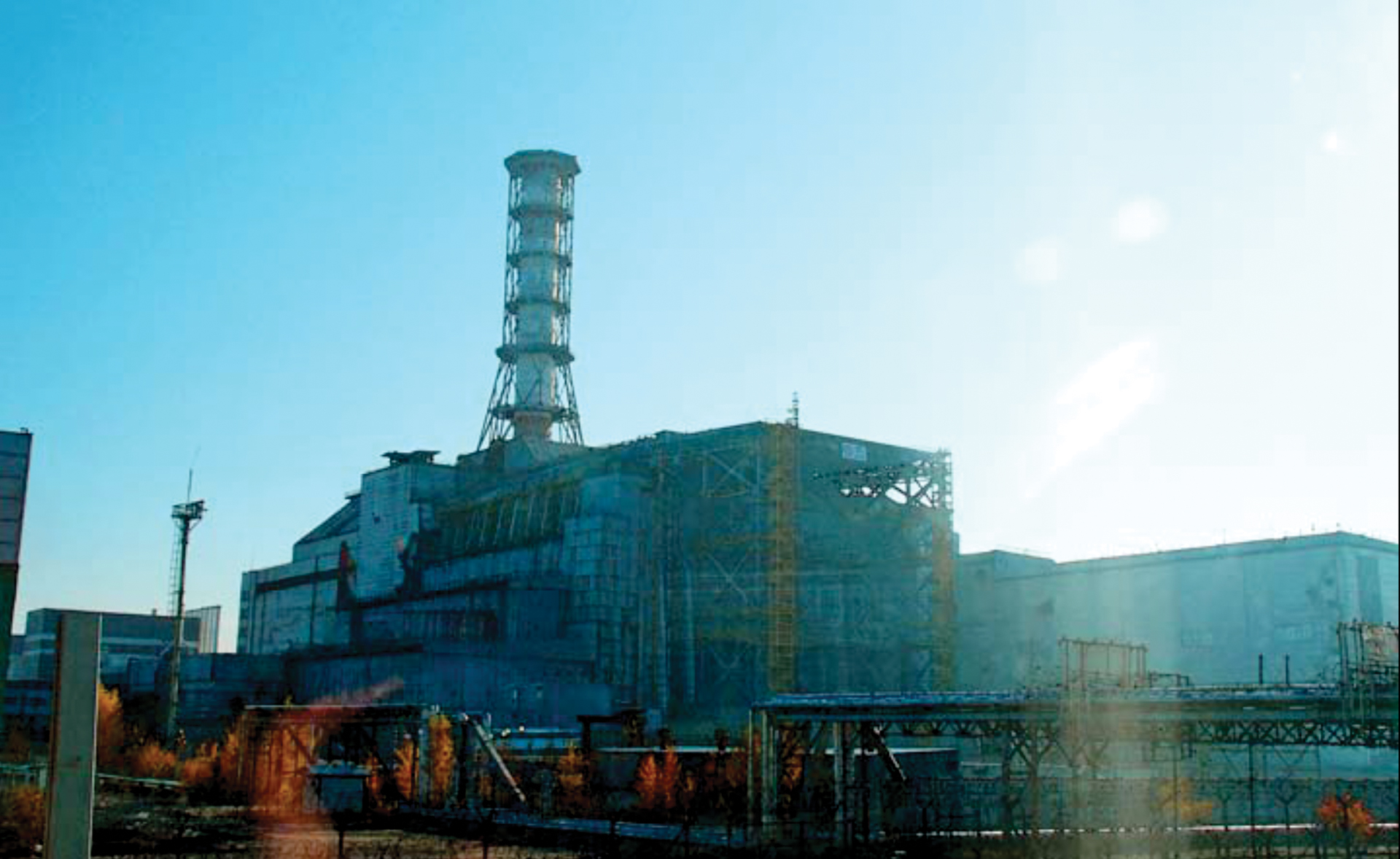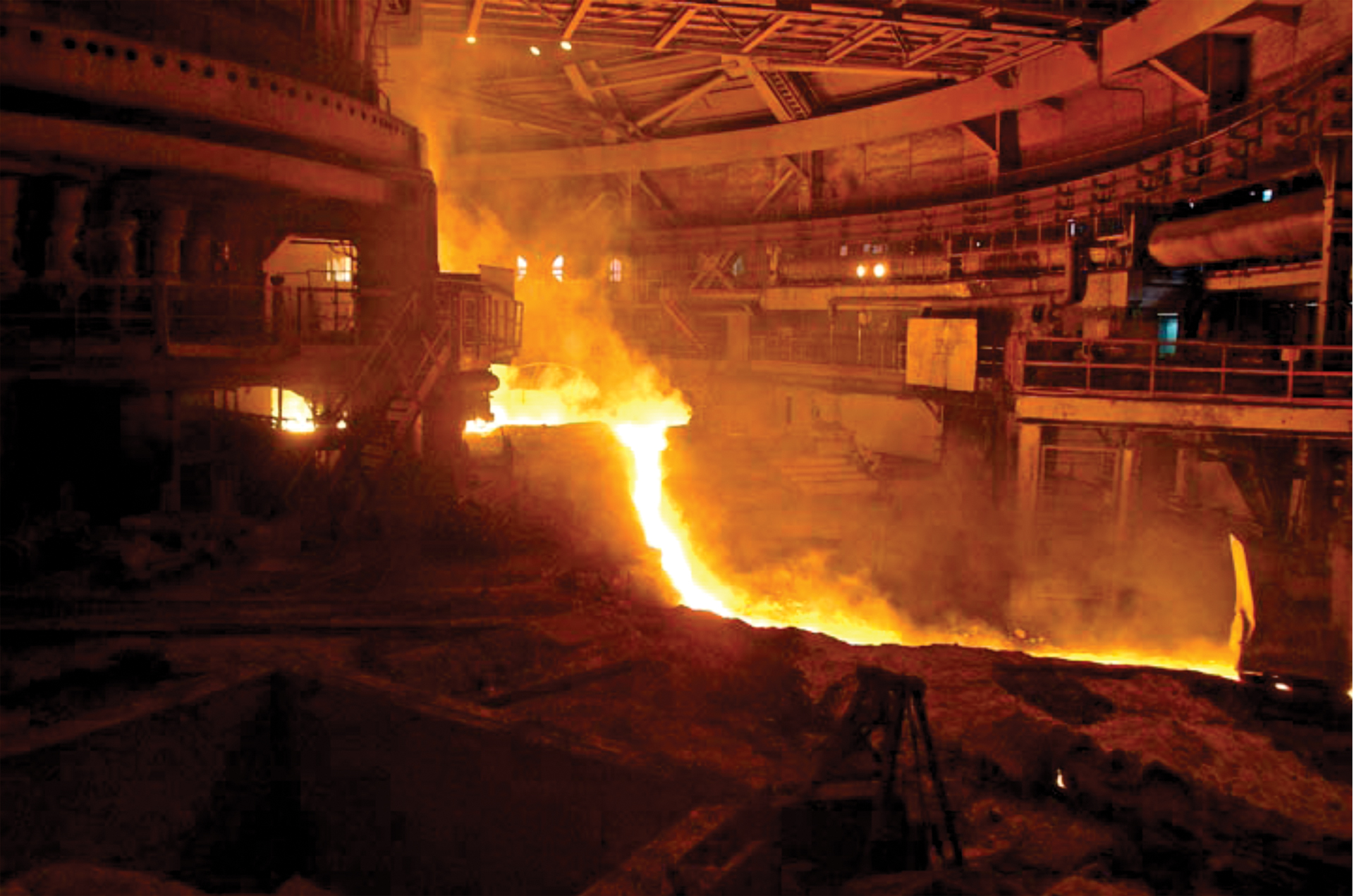Ukraine Series: 2007
Artist’s Statement
“In October, 2007 I had the honor of visiting Ukraine as an ad hoc Cultural Emissary sent by the US Department of State under the auspices of their Art In Embassies Program. Beyond my scheduled events, the Embassy staff made special arrangements for behind-the-fence visits to sites that were of particular interest to my creative endeavors, including: The great Port of Odessa on the Black Sea. It is a major Maritime transportation hub for Eastern Europe and handles a wide variety of products.
The city of Kryvyi Rih which contains the largest steel-making complex in Eastern Europe. Once a state-owned facility, it was acquired by Arcelor Mittal Steel, the largest steel manufacturer in the World. On site I visited their Coking Plant, Blast Furnace #9, one of their Iron Ore Strip Mines and their Blooming Mill.
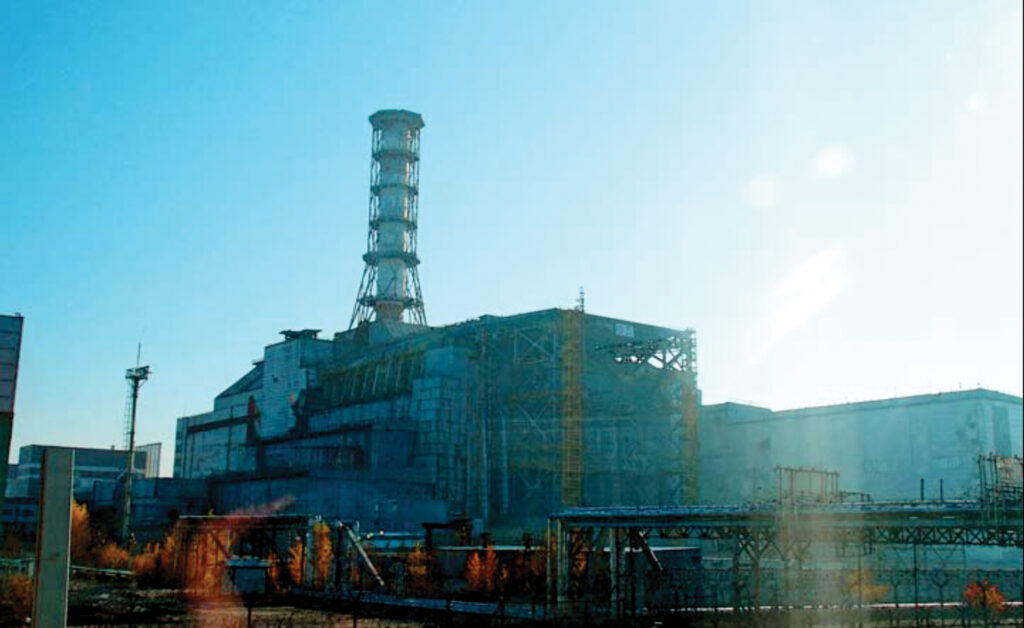
I was afforded the rare opportunity to visit the Chernobyl Exclusion Zone. It is the site of the worst nuclear disaster in history. In the early morning hours of April 26, 1986, a massive explosion and fire occurred in Reactor #4, spreading toxic levels of radiation over a wide area. The most compelling aspect of Chernobyl is how “normal” it all appears. Catfish teem in the reactor cooling channels and apple trees are loaded with fruit – all of it deadly, and radiation levels remain dangerously high.
Pripyat, now known as “Dead Town,” was built in 1970. It was essentially a self-contained city, complete with schools, a hospital, cultural center, restaurant and cafes, hotel and even a newly-constructed Amusement Park. The park was scheduled to open on May Day, 1986. No one ever rode on the rides. What is striking about Pripyat is the overwhelming silence.”
Janos Enyedi, 2008
Why the Ukraine Series is Currently Unavailable
When Janos returned from Ukraine in the November of 2007, he selected and worked the digital images. He was so moved by the experience, that he wasn’t sure how to exhibit them. He felt the images from Chernobyl and Pripyat were so compelling, they needed text panels to explain them.
Janos and Diana had recently read Wolves Eat Dogs, a crime novel by Martin Cruz Smith, set in Russia and Ukraine area around the Cherynobyl Exclusion Zone in the year 2004 – the fifth novel to feature Investigator Arkady Renko. Wouldn’t it be great to collaborate on an exhibit? Dream on!
As Janos worked the images, the US economy was beginning to fail, the housing bubble had already burst. The art market was taking a hit. The 2008 crash would soon follow.
Janos did have an exhibit entitled Ports: Norfolk & Odessa, at the Page Bond Gallery in Richmond, VA in late 2008. It was well received, but only one major piece sold.
In early 2009, Janos decided to shutter the studio and seek employment; the first since he went full-time into the studio in 1994. He had been a successful account rep for a printing firm for 5 years before focusing full-time on his art. He took a job as a rep for a signage firm closing on several government contracts. Government shutdowns delayed the projects, and therefore his income was also delayed. The economic recovery from the recession of 2008 was slow. Diana and Janos contemplated their options. Their property in northern Virginia was their biggest asset. The cost of living was high. Perhaps they should sell their asset and find a more economical place to live.
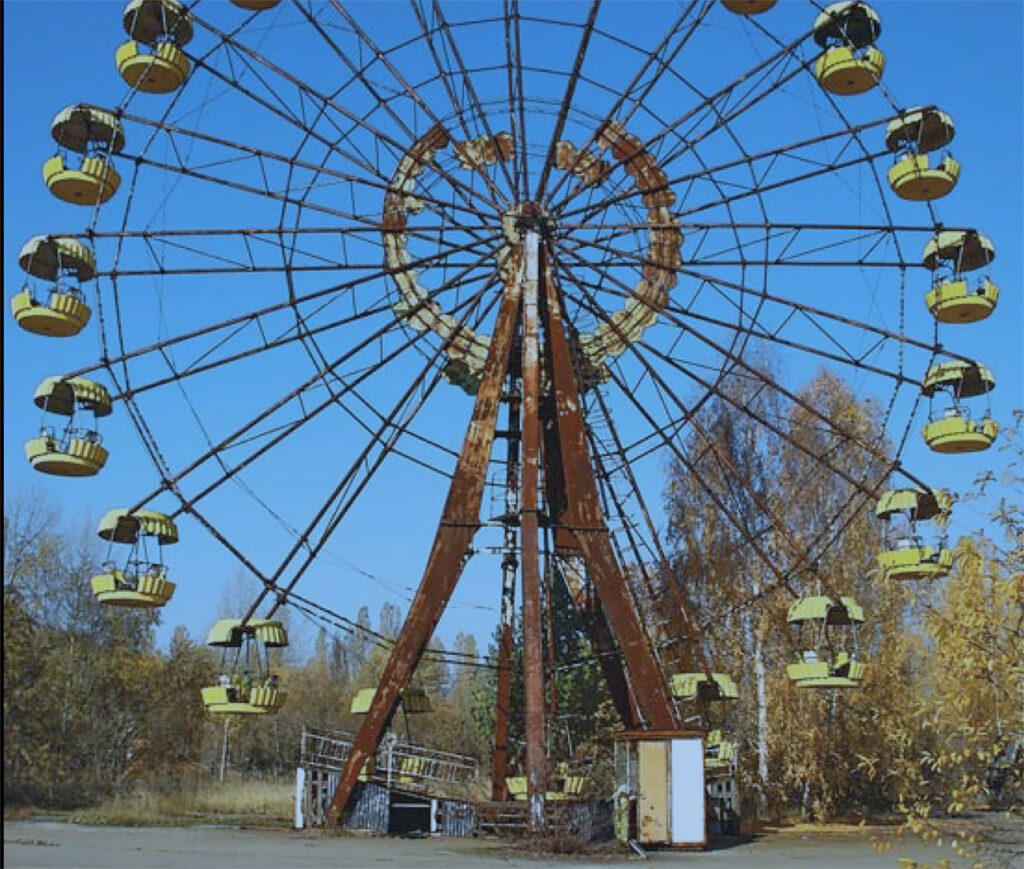
After research they decided to move to St. Petersburg, FL where there was a burgeoning art community, and several friends were living within a 60-mile radius: Agnes and Roy Slade. Roy had been the Director of the Corcoran Gallery of Art, Washington, DC and Dean of the Corcoran School of Art. Murray Bring, a well-known DC/NY lawyer and major collector of Janos’ art. Jim & Susan Frazier longtime friends and collectors. Robert Stackhouse, known since the Corcoran days and Carol Mickett, Robert’s wife & artist collaborator. Perhaps it was time for the Sunshine State, they could make their art anywhere. Janos and Diana moved to St. Pete on cinco de Mayo of 2011 to start a new chapter, renovating an industrial building in the Warehouse Arts District, an area that had just begun to develop. They became very involved in the new community. . . . 5 months later, renovation to their home and studio were near completion when Janos suffered a heart attack from which he did not recover.
Janos and Diana had just packed up nearly 40 years of his artwork and renovated their new home/studio. Janos needed neck surgery. He had made an appointment for the next week to discuss it with a referred surgeon who also served the VA hospital there. They weren’t worried about his heart.
The only renovation still to do, was to install the counter tops on the counters in the studio. Then Janos could start making art again.
Artist friends that Janos made, Scott Durfee and George Medeiros, came to Diana’s aid and completed the counters, finished off some yard-work and became great friends of Diana. There were many other supporters: the 4 couples who were the reason for choosing St. Petersburg, the artist in that community, the folks who did the renovation and a few family and friends from out of state came to the Celebration of Life that Diana held in their new home.
But Diana’s focus that first year was on insuring a huge collection of Janos’ art which had to be evaluated for probate purposes. That took until early spring of 2012. Diana was hearing from their friends back in the Virginia/DC area. They were mourning his passing. She decided she should address that by having a Celebration of Life in the DC area. Two close friends, a sculptor, John McCarty and a university art professor, Dr. Steven Mansbach told Diana any event would have to include some sort of exhibition of his art. Hmmm, Diana understood, but they had just moved all the art to Florida, and venues were usually scheduled 2-3 years in advance.
Diana called an acquaintance, Judy Greenberg, the Director of the Kreeger Museum, a private contemporary collection of art, and on her request, Janos and Diana had hosted a tour of Janos’ studio. Diana emailed Judy about doing an evening celebration in the Kreeger auditorium where Janos had done a slide show presentation a few years earlier. Diana thought it would be large enough and perhaps a few works could be hung there for the evening. Judy said that the space had been turned into a gallery. It could not be used. BUT her curator also curated exhibits for the Arts Club of Washington which Diana knew about. It was about 3 blocks walking distance from the Corcoran Gallery and School. They had an auditorium which could hold up to 150 people. Diana asked local collectors of Janos’ work to loan some pieces for the exhibition at the Arts Club. Great idea! And it worked!

